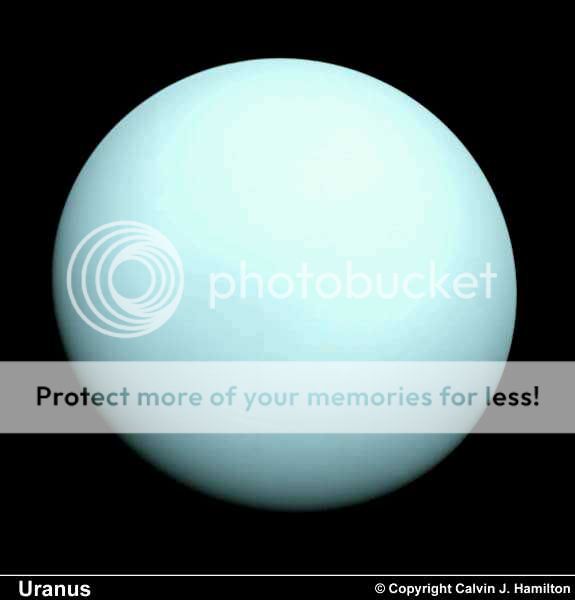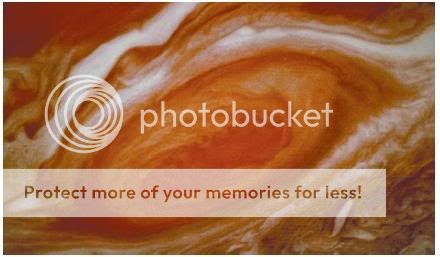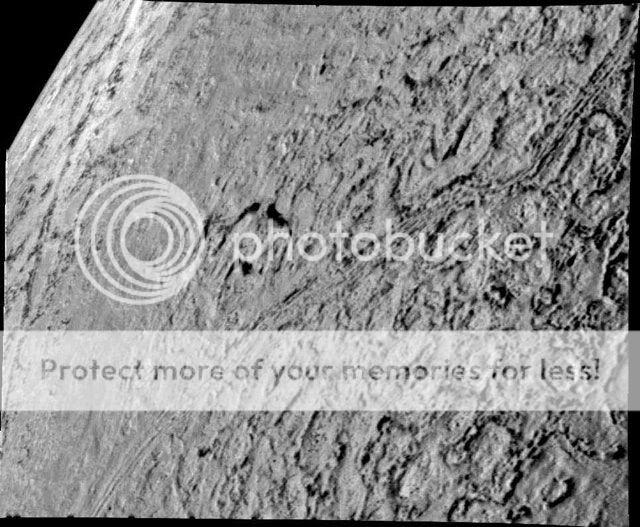|
|
|
|
|
|
|
|
|
 Posted: Sat Dec 22, 2012 4:03 pm Posted: Sat Dec 22, 2012 4:03 pm
|
|
|
|
|
|
|
|
|
|
|
 Posted: Sun Dec 23, 2012 12:17 pm Posted: Sun Dec 23, 2012 12:17 pm
 |
 |
 |
 |
Chapter 10: Jupiter's Moons

As mentioned before, Jupiter has 60 moons, the most in the Solar System as we know it. There are four that are heavily studied. They are named for Galileo Galilei. They are called Callisto, Europa, Ganymede, and Io.
Callisto is the third largest moon in the Solar System. It is in tidal lock with Jupiter, meaning that if you were to be on the surface of the planet, you would only ever see one side of it in the sky. It is made of a variety of rocks and ices, including water ice and organic materials. Callisto is very heavily cratered and has a very thin atmosphere. Because it may have an internal ocean, it is possible that life could exist on this moon.
Europa is one of Jupiter's smaller moons, but it is still among the Solar System's largest.It is made of silicate rock and likely has an iron core. It has an atmosphere made of oxygen and a surface made of cracked water ice due to the tidal flexing caused by Jupiter.
The closest moon to Jupiter is Io. It is the fourth largest moon in the Solar System. There are over 400 volcanoes on this moon, making it the most geologically active object in the Solar System. Several of these volcanoes spew sulfur and sulfur oxide. There is also an extensive mountain system with some peaks being taller than Mount Everest. The discovery of this planet is actually very important as it led to the Copernican, or heliocentric, model of the Solar System, the development of Kepler's laws, and an observation of the speed of light.
The largest moon in the Solar System is Ganymede. It is made of relatively equal amounts of silicate rock and water ice. It is the only known satellite to actually have a magnetosphere and it has a thin atmosphere made of various forms of Oxygen. |
 |
 |
 |
 |
|
 |
 |
|
|
|
|
|
|
|
|
|
|
|
|
|
|
|
 Posted: Fri Dec 28, 2012 2:17 pm Posted: Fri Dec 28, 2012 2:17 pm
 |
 |
 |
 |
Chapter 11: Saturn

Saturn is the sixth planet from the Sun, and the second largest in the Solar System. Despite its enormous size, Saturn is the only planet light enough to float on water, if a body of water large enough could be found. Saturn has 62 moons, but only 53 of them are named. The planet is also well known for its stunning rings. The rings are the remnants of objects that get too close to the planet and are torn apart by the Roche Limit.
The atmosphere consists of molecular hydrogen and helium. Trace amounts of ammonia, acetylene, ethane, propane, phosphine and methane have also been found in the atmosphere. Saturn has a small rocky core, similar to the one found in Jupiter.
Saturn has always been associated with the law. Physicians, scholars, philosophers, and scholars are believed to have a connection to this planet, making them melancholy and wise. Death is also associated with this planet. It rules Capricorn and Aquarius. |
 |
 |
 |
 |
|
 |
 |
|
|
|
|
|
|
|
|
|
|
|
|
|
 Posted: Fri Dec 28, 2012 2:22 pm Posted: Fri Dec 28, 2012 2:22 pm
|
|
|
|
|
|
|
|
|
|
|
|
|
 Posted: Fri Dec 28, 2012 2:23 pm Posted: Fri Dec 28, 2012 2:23 pm
 |
 |
 |
 |
Chapter 13: Uranus

This is the seventh planet from the sun. Uranus is similar in composition to Neptune and it is sometimes referred to as an "ice giant". This is due to the fact that it has more water, ammonia, and methane in its composition than the other gas giants, such as Jupiter and Saturn. An interesting feature of this planet is that it actually spins on its side. Its equator runs from the typical location of the poles on a planet. It is known to have rings and it is pretty featureless.
Uranus is the ruling planet of Aquarius and is exalted in Scorpio. The Greeks regarded Uranus as the personification of the heavens and night sky. In modern times, it is associated with genius, individuality, new ideas, discoveries, electricity, inventions and the beginning of the industrial revolution. It governs societies, clubs, and other types of social groups, as well as sudden, unexpected change, freedom and originality. |
 |
 |
 |
 |
|
 |
 |
|
|
|
|
|
|
|
|
|
|
|
|
|
 Posted: Mon Dec 31, 2012 12:39 pm Posted: Mon Dec 31, 2012 12:39 pm
 |
 |
 |
 |
Chapter 14: Neptune

With the recent reclassification of Pluto as a dwarf planet, likely belonging to the Kuiper Belt just outside our Solar System, Neptune is the last planet that humans have knowledge of. It is the fourth largest planet and is nearly the twin of Uranus. The discovery of this planet was actually not done by observation. Instead, it was discovered due to mathematical calculations. An unexpected change in Uranus' orbit caused the Muggle astronomers Alexis Bouvard and Johann Galle to discover the existence of yet another planet.
Neptune has a composition similar to that of Uranus, making it an ice giant. Its atmosphere consists of hydrogen and helium, as well as gases such as water, ammonia and methane. Because of its distance from the Sun, this is one of the coldest places in the solar system. Neptune has a feature similar to Jupiter's Great Red Spot. This storm is called the Great Dark Spot.
Neptune is the ruling planet of Pisces. The Romans belived Neptune to be the god of the sea. In modern times, the planet is connected with creativity, idealism and compassion. On a negative note, it is also associated with illusion, confusion, and deception. Neptune governs places that act as a retreat from society. |
 |
 |
 |
 |
|
 |
 |
|
|
|
|
|
|
|
|
|
|
|
|
|
|
|
 Posted: Mon Dec 31, 2012 12:51 pm Posted: Mon Dec 31, 2012 12:51 pm
|
|
|
|
|
|
|
|
|
|
|
 Posted: Mon Dec 31, 2012 12:56 pm Posted: Mon Dec 31, 2012 12:56 pm
|
|
|
|
|
|
|
|
|
|
|
|
|
 Posted: Mon Dec 31, 2012 1:05 pm Posted: Mon Dec 31, 2012 1:05 pm
|
|
|
|
|
|
|
|
|
|
|
 Posted: Mon Dec 31, 2012 1:08 pm Posted: Mon Dec 31, 2012 1:08 pm
|
|
|
|
|
|
|
|
|
|
|
|
|
 Posted: Mon Dec 31, 2012 1:14 pm Posted: Mon Dec 31, 2012 1:14 pm
|
|
|
|
|
|
|
|
|
|
|
 Posted: Mon Dec 31, 2012 1:20 pm Posted: Mon Dec 31, 2012 1:20 pm
|
|
|
|
|
|
|
 |
|
|
|
|
|
|














